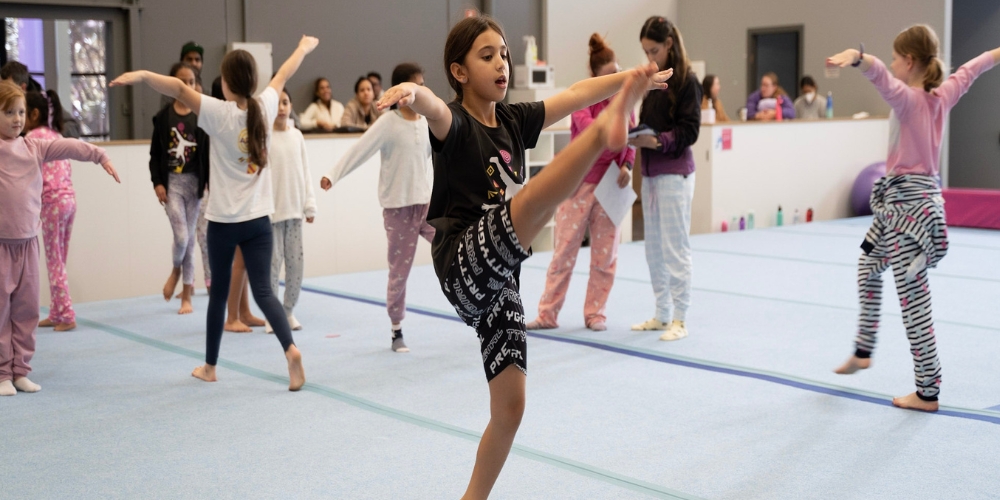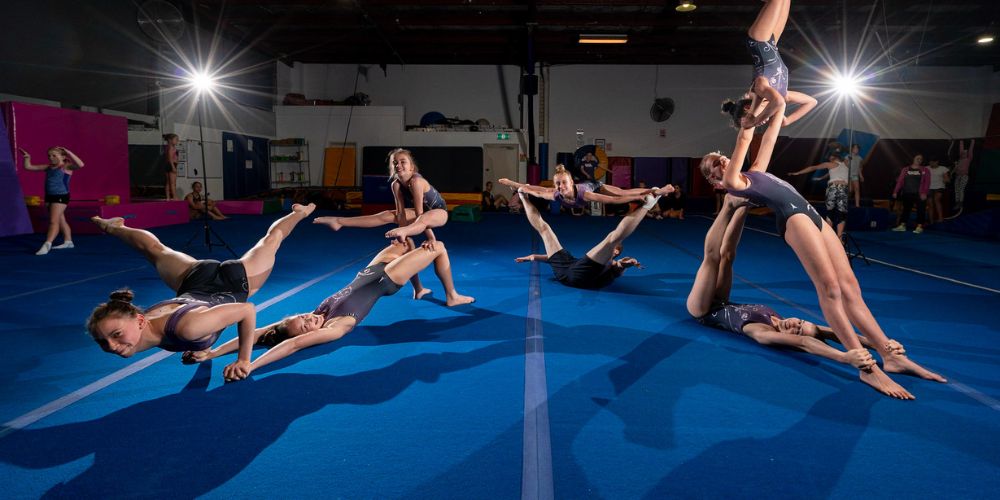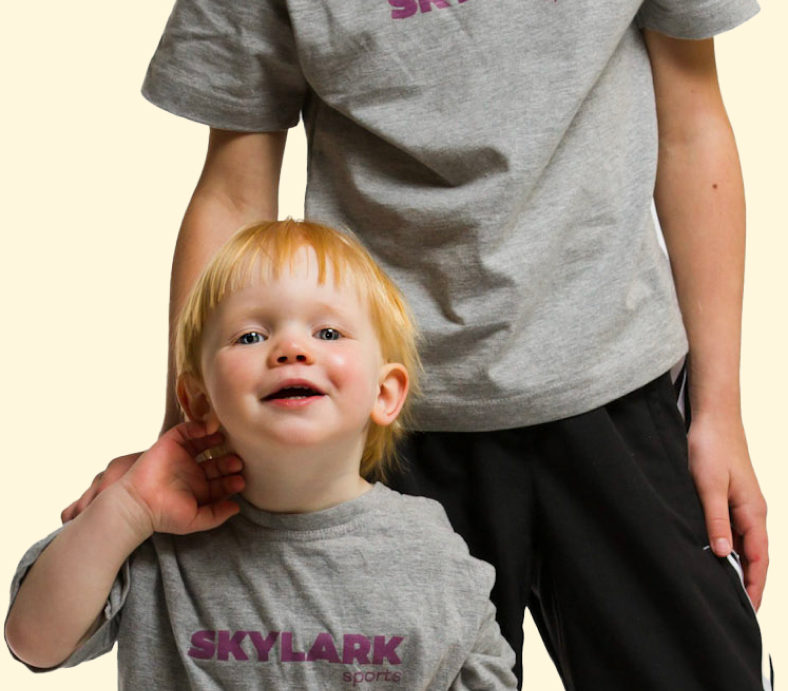Now that you finally realise that you or your kid is into gymnastics, how do you start?
Well, of course. Let's start with the basics! It would help if you prepared a few things for the exciting journey ahead in gymnastics. So, what essentials will set you on a fantastic start?
Let's find out!

What Do You Need for Gymnastics?
Gymnastics Mat
The most important piece of equipment for any gymnast is a gymnastics mat. Stretches, floor routines, and tumbling passes may be performed safely and supportively on this padded surface. By acting as a barrier, the mat lessens the force on joints and lowers the possibility of injury during landings. Ensure the gymnastics mat you choose fits your training programme's unique requirements by considering thickness, durability, and size. A premium mat is a must to create a safe and cosy space that promotes skill development and injury prevention.
Leotard
The leotard is more than a costume; it represents the focus and discipline essential to gymnastics. With its one-piece design, this outfit maximises the range of motion, making it easier to perform complicated routines with elegance and grace. In addition to improving a gymnast's flexibility, a well-fitting leotard adds to the sport's visual attractiveness. In addition to its practical advantages, donning a leotard during practice and competitions instils a mindset of dedication and commitment to the artistic quality of gymnastics.
Gymnastics Grips
Gymnasts performing bar exercises need gymnastics grips for hand protection. These grips, usually made of leather, improve bar traction and protect against calluses and blisters. Selecting the appropriate grips is essential because they allow gymnasts to confidently and controllably execute complex routines on uneven, parallel, and high bars. Gymnastics grips are essential for improving technical proficiency on a variety of apparatuses and for enhancing safety during training.
Chalk
In gymnastics, chalk is an essential item for keeping a firm hold. Chalk is a moisture-absorbing substance applied to the hands and occasionally other body parts. It ensures a dry surface and lowers the risk of slipping when performing exercises on bars, rings, and other equipment. Beyond its usefulness, the gymnastics ritual of chalking up symbolises focus and preparedness and is deeply embedded in the culture. A gymnast with sufficient chalking can perform complex movements, swings, and dismounts with assurance and accuracy.
See our blog about "What do gymnasts put on their hands?" to learn more about chalk.
Water Bottle
Staying hydrated is crucial in gymnastics, where physical effort is high and ongoing. A water bottle is an essential training session since it offers a convenient and quick way to stay hydrated. Regular water consumption promotes overall performance, helps sustain energy levels, and facilitates healing. Selecting a water bottle that is both spill-proof and conveniently located guarantees that staying hydrated becomes an integrated aspect of the gymnastics routine, enhancing endurance and overall health.
Bands of Resistance
Resistance bands are versatile tools that give gymnastics training additional complexity. Because they offer varying resistance, these elastic bands are perfect for focused muscle engagement, flexibility exercises, and strength training. Resistance band training increases muscular tone, general strength, and body control. Resistance bands provide a dynamic and efficient approach to supplement traditional gymnastics training, from warm-up drills to specific sessions, helping to develop a resilient and well-rounded athlete.
Device for Recording Videos
A video recording gadget, such as a camera or smartphone, is a great tool for gymnasts who want to improve. Athletes can identify areas for improvement and refinement in their form, technique, and performance by reviewing their recorded practice sessions. Self-evaluation is made possible by the playback feature, which also offers insights that might not be seen during the real routine. This tool takes on the role of a coach's eye, supporting the growth of muscle memory, skill improvement, and the pursuit of gymnastics perfection. Frequent video analysis becomes essential to training, encouraging a proactive attitude towards skill development and ongoing self-improvement.

Tips on How To Prepared to Start Gymnastics
Taking up gymnastics is a fascinating endeavour that blends discipline, artistry, and athleticism. Enough preparation is essential for a successful start, whether you're a newbie excited to explore the world of flips and tumbles or someone returning to gymnastics after a break. These seven-pointers will help you feel more prepared and confident as you enter the exciting and dynamic gymnastics world.
Research and Choose a Gymnastics Facility
The first thing you should do while starting gymnastics is to locate the ideal facility. Investigate nearby gymnasiums, read reviews, and consider elements like the calibre of the coaching staff and the equipment. You can assess the atmosphere and choose where to start your gymnastics journey by visiting the facility in advance.
Understand Basic Gymnastics Concepts
Learning the basic terms and ideas of gymnastics will help you feel more at ease when you begin to train. You can follow directions and participate completely in your training sessions if you are familiar with the fundamentals of each apparatus and common exercises.
Invest in Proper Clothes
The appropriate clothes directly impact your performance and are not just for show. Purchasing a leotard that fits properly guarantees comfort and range of motion. It will assist to be aware of the gym's attire policy and any equipment needs so that you can show up ready for every session.
Obtain Necessary Equipment
Certain gymnasiums may require personal equipment, such as grips or certain shoes. Ensuring you have everything you need for a smooth and pleasurable training session is best achieved by checking in with your coach or the gym administration.
Build Flexibility and Strength
Prioritising strength and flexibility training is wise before beginning official gymnastics training. Strengthening and stretching activities can help your body better prepare for the demands of gymnastics. Please include them in your workout plan.
Practice Fundamentals at Home
Learning the fundamentals of gymnastics at home prepares you for a more seamless transition to formal instruction. Simple movements like handstands and forward rolls can be practised to help develop confidence and familiarity with the fundamentals of the sport.
Attend Courses for Beginners
Starting with introductory gymnastics courses is a disciplined and encouraging way to start. These courses are meant to gently educate beginners about the sport while emphasising the fundamental abilities and methods. Starting with these classes will guarantee that you have a firm grasp of the foundations and that your gymnastics journey gets off to a good start.
Frequently Asked Questions
How can I prepare for my gymnastics class?
Since not all classes include warm-ups, the teacher might assume that your child has warmed up in advance. The best preparation you or your child can do if you arrive early is to stretch as you wait for the lesson. Their body will be ready for whatever the day has in store for them in this way.
Can adults start gymnastics?
Absolutely! Many gymnastics programs cater specifically to adults. Classes are designed to accommodate various skill levels and age groups, whether you're a complete beginner or returning to the sport.
Is gymnastics only for those who want to compete?
No, gymnastics is for everyone, not just those interested in competition. Many people participate in gymnastics for fitness, fun, and skill development. Whether you have aspirations of competing or want to enjoy the physical and mental benefits, there's a place for you in gymnastics.
How often should I practice gymnastics as a beginner?
The frequency of practice depends on individual goals, schedules, and fitness levels. Starting with one to two classes per week is common for beginners. Consistency is more important than frequency; gradual progression prevents injuries.
Conclusion
Entering the world of gymnastics is a thrilling adventure full of opportunities. From knowing the necessary equipment to mastering the fundamental motions, you're ready for an experience that blends power, elegance, and fun. Therefore, enjoy the learning process and recognise and appreciate every accomplishment, no matter how tiny, whether you're flipping bars or honing your balance on the beam.
Now, it's your turn! Take that leap, sign up for a class, and let the mats be your playground. Remember, the journey is just as exciting as the destination, and every twist, turn, and tumble brings you one step closer to mastering the art of gymnastics. So, what are you waiting for? Grab your leotard, chalk up those hands, and let the gymnastics adventure begin! See you on the mat!

